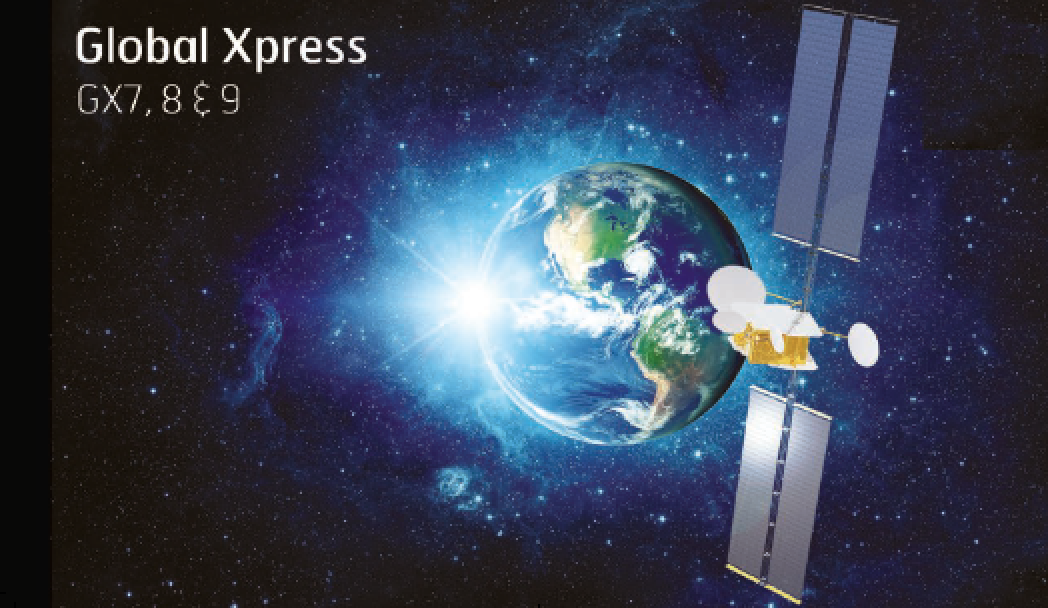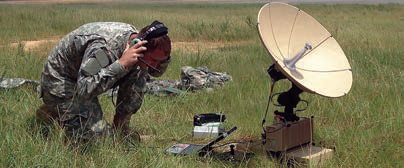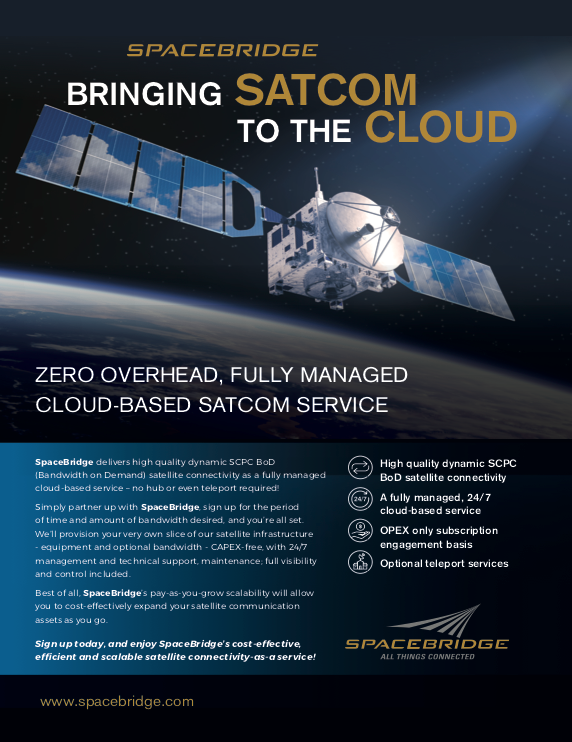In recent years, the U.S. government has taken a number of steps and implemented strategies that promise to redefine how it acquires satellite communications (SATCOM), with the goal of developing an “integrated SATCOM architecture of the future” driven by a partnership with the commercial SATCOM sector.
This promise of a change is reflected in General John Hyten, Commander, United States Strategic Command’s statement before the Senate Committee on Armed Services: “Future SATCOM systems remain key to our continued strategic posture in space. We must design and fund replacement systems and remain on schedule for smooth transition of operations to these new systems. We must expand international SATCOM partnerships, strengthen our industrial base response to acquisition challenges, and integrate commercial opportunities to evolve future satellite payloads towards commercial solutions wherever possible.”

The commercial SATCOM industry has demonstrated time and again that we understand government customers’ requirements and — in responding to those requirements — have invested heavily into enhancing mobility, flexibility, redundancy, throughput, resiliency and protection for satellite systems.
Officials from the Department of Defense (DoD) and the House Appropriations Subcommittee on Defense have said that they are seeking a better long-term plan to buy commercial SATCOM (COMSATCOM) via a more seamless, integrated network structure, and that significant changes in SATCOM procurement are required to make this happen.
This is supported by the Fiscal Year (FY) 2019 budget, where Congress appropriated $49.5 million in Research, Development, Test and Evaluation (RDT&E) funding to create a new “program of record for commercial satellite communications” within the U.S. Air Force. The program is intended to pursue a “wideband and narrowband communications architecture and acquisition strategy” that includes both government and commercial space systems.
General Hyten’s statement reveals how DoD leaders are increasingly recognizing that they must have open access to nothing less than a “fully stocked toolshed” — comprised of a combination of legacy, purpose-built platforms and primarily more modern, commercially-developed options — to readily obtain mission-critical mobile and highly-available wideband. Without such a toolshed — an essential, fully integrated architecture with a heterogeneous network — modern capabilities and unquestioned resiliency will remain out of reach.
As a trusted, commercial owner-operator delivering robust and secure satellite communication services worldwide, Inmarsat provides flexible and scalable alternatives for the U.S. government and its Allies, complementing military SATCOM (MILSATCOM) in both narrowband
and wideband.
For 40 years, Inmarsat has been a major driving force behind technological innovation in mobile satellite communications. The company has sustained its leadership through substantial investments in a powerful network of technology and value-added manufacturing and wholesale partners.
Users leverage the firm’s Ka- and L-band services for core functions, while seamlessly integrating with MILSATCOM to address any remaining gaps to ensure optimal redundancy, diversity, protection, scalability and global portability: the ultimate resilience approach. This frees up government members from administering disparate networks, allowing them to focus on mission-critical operations.

Inmarsat continues to invest in L- and Ka-band enhanced capabilities to include satellites, ground segment, terminals and services to support users’ unique needs anywhere around the globe, while delivering greater value to government customers.
For example, Inmarsat recently announced the expansion of Global Xpress, delivering greater, seamless capacity in regions with the highest demand. These next-generation satellites and payloads will bring ground-breaking advancements in support of ever-increasing worldwide demand for government mobile connectivity with unprecedented flexibility, scalability and cost efficiency.
Importantly, the next evolution of Global Xpress will also provide military Ka-band capacity, complementing U.S. and NATO Allied military satellite resources cost effectively anywhere around the globe. The initiatives seamlessly integrate increased diversity, interoperability and resilience to government architectures without additional infrastructure investment from end-users.
Inmarsat’s next generation of Global Xpress — of which three new satellites (GX7, 8 and 9) will launch from 2023 — will deliver dynamically-formed beams that enable agile and precise allocation of ultra high-power capacity over high-demand areas and allow for superior interference resistance.
This innovative, software-defined, global architecture — with geostationary orbit (GEO) satellites augmented by two recently announced dedicated payloads covering Arctic coverage — will have flexible payloads that can be relocated when and where required across the geostationary arc and connect to any Inmarsat software-defined ground network node. The satellites will bring higher throughput speeds and flexible and dynamic capacity scaling based on user-specific resource demands.
The company will deliver the world’s first and only global mobile wideband services to the Arctic region via two new satellite payloads hosted on board Space Norway satellites, scheduled to launch in 2022. These payloads will be placed into Highly Elliptical Orbit (HEO), ensuring continuous coverage above 65 degrees North while directing capacity in real-time to the areas of highest demand. Importantly these payloads will also provide mil-Ka capability through service beams and high-capacity steerable beams, complementing military satellite resources.
The HEO satellites will fully integrate with the Global Xpress GEO network to deliver one, seamless service. They will be fully compatible with current and future Global Xpress terminals, so that existing and new Global Xpress customers can benefit from the further extension of
the network.
In addition to the evolution in Ka-band, government users continue to have access to innovative capabilities in L-band as complementary resources to MILSATCOM, offering services that are designed for every aspect of communications-on-the-move (COTM) missions — from machine-to-machine (M2M) to high-throughput data and video distribution for highly mobile platforms — via Inmarsat’s Wideband Streaming L-Band (WiSL), L-band Tactical Satellite (L-TAC), Broadband Global Area Network (BGAN) High Data Rate (HDR), SwiftBroadband-Safety (SB-S) and other services.
Users will also benefit from the continuation of the firm’s award-winning L-band services via the sixth-generation (Inmarsat-6) fleet, scheduled for launch in 2020. The Inmarsat-6 fleet is a unique dual band payload covering L- and Ka-band services, and will support a new generation of capabilities for the 5G era, from advanced global safety services and low-cost mobile services to high-definition streaming.
The advanced Ka-band payload will add further depth to Global Xpress coverage, delivering greater capacity in regions with the highest demand.
It is extremely encouraging — even inspiring — to take part in this exciting era of innovation and help the U.S. government forge a path to an integrated SATCOM architecture of the future. Inmarsat is investing heavily into improving SATCOM mobility, flexibility, redundancy, throughput, resilience and protection.
Inmarsat is incorporating new and enhanced capabilities into the baseline DoD architecture, ensuring consistent, robust advancements and technology upgrades.
The vision for this future is clear. With a continuing, successful partnership between government and industry, we will achieve it
www.inmarsatgov.com
Ms. Cowen-Hirsch is responsible for establishing Inmarsat’s strategic direction and policy with respect to U.S. government. She also leads Inmarsat’s government outreach and advocacy program shaping its government focused capabilities and strategy. Ms. Cowen-Hirsch brings more than 25 years of defense, aerospace and executive leadership experience to Inmarsat.

As a decorated member of the Senior Executive Service (SES) in the U.S. Department of Defense, she served as the Program Executive Officer for SATCOM, Teleport, and Services at the Defense Information Systems Agency (DISA). She served in several other key SES executive positions including as the first Vice Component Acquisition Executive for DISA, with executive management responsibility for the acquisition oversight and horizontal integration of DISA’s products, services and programs.
Ms. Cowen-Hirsch established the Defense Spectrum Office, serving as its first Director where her responsibilities included the development of national security spectrum strategic plans and policy, and national and international negotiation of defense spectrum issues. Her broad defense career ranged from systems engineering, experimental flight test, program management, spectrum management and a wide range of executive leadership positions.
Ms. Cowen-Hirsch was a rated experimental flight test engineer; was the first female civilian Mission Commander for the Advanced Range Instrumentation Aircraft (ARIA) mission; and was the recipient of an Exemplary Service Medal for her years of selfless service to the Department of Defense.
Ms. Cowen-Hirsch serves on the board of directors for the Mobile Satellite Users Association (MSUA), a non- profit association dedicated to promoting innovation and development of the satellite mobility market worldwide. Additionally, Ms. Cowen-Hirsch has been recognized for her professional accomplishments as well as her leadership in the technology industry and her dedication to STEM education. She is a recipient of awards from prestigious organizations such as the Armed Forces Communications and Electronics Association (AFCEA) and Women in Technology.




